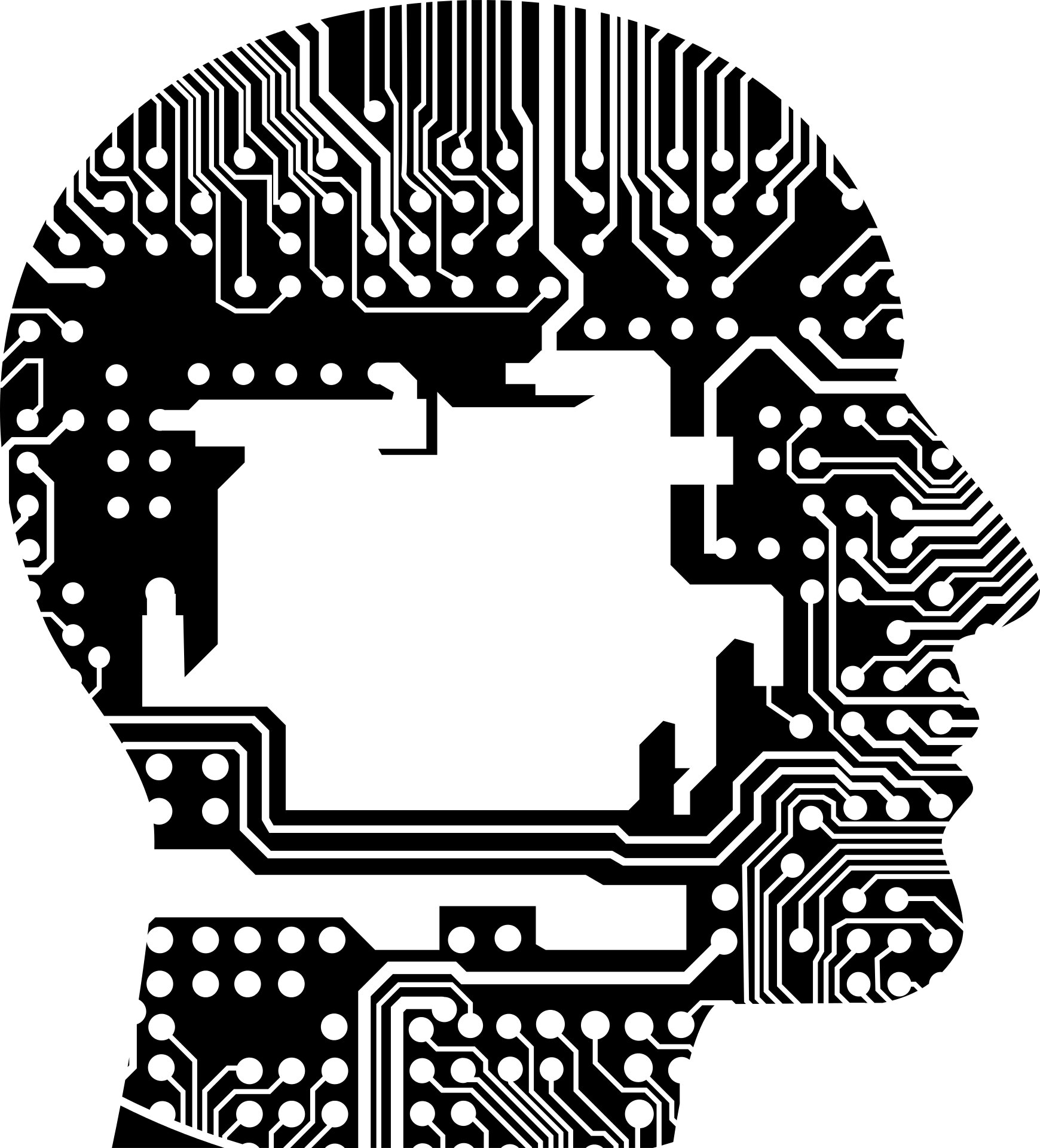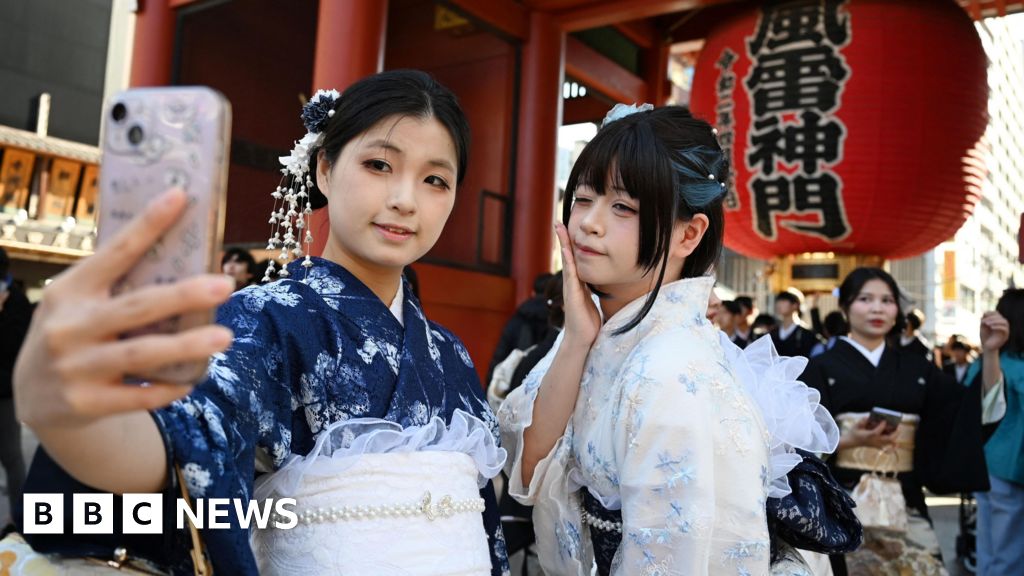Tech
EPA, Energy, Interior announce plans to support coal mining

On Sept. 29, the Trump administration announced a series of actions intended to boost coal mining and electricity generation, its latest move in a government-wide effort to reverse the fuel’s decline.
The announcements from the EPA, Energy and Interior departments are intended to bolster the domestic coal industry at a time of increasing electricity demand due in large part to artificial intelligence data centers. Administration officials and congressional Republicans said these changes are necessary to ensure U.S. competitiveness.
“Around the world, coal is still growing. People talk about peak coal, most consumption, but last year was the year that the most coal was used in the world, and of course we’re in a competition,” Interior Secretary Doug Burgum said, referring to the AI industry in China. “If we don’t lead in electrical production, we’re going to lose the AI arms race.”
The Energy Department will provide $625 million to subsidize and support coal-fired plants, including $350 million for retrofitting and recommissioning coal plants at or near their retirement dates and $175 million for coal power projects in rural communities.
The Interior Department said it will open more than 13 million acres of federal land for coal mining and streamline permitting the approval process for other mines. It will also implement a provision of the Republican reconciliation law that reduces the royalty rate for coal from 12.5 percent to 7%.
And the EPA announced regulatory changes that would favor coal-fired power plants. They include providing plants with more time to comply with existing effluent limitations guidelines, which govern coal ash wastewater pollution, and an advance notice of proposed rulemaking on changes to the Clean Air Act’s regional haze rule.
U.S. production of coal has declined for more than two decades across Republican and Democratic administrations, with this most carbon emissions-intensive fuel displaced by natural gas, wind and solar power.
However, the Trump administration has been critical of wind and solar energy, blocking projects on federal lands and waters. Officials argue these forms of energy, even when paired with batteries, remain too unreliable and cannot support AI and other industries. In addition, Energy Secretary Chris Wright and others have criticized wind and solar power subsidies, arguing they are evidence these renewables are not cost-effective.
Instead, they have called for increased efforts to preserve and expand forms of baseload power, including coal. Earlier in 2025, President Donald Trump signed an executive order to support the coal industry.
When addressing the United Nations, Trump reiterated his belief that climate change was a “hoax” and said European nations were on the “brink of destruction because of the green energy agenda.”
EPA Administrator Lee Zeldin said in a Sept. 25 Fox News interview that he agreed with Trump’s statements. Also last week, Wright characterized a network of scientists who agree about the severity of climate change and its impact as “activists.”
2025 CQ-Roll Call, Inc., All Rights Reserved. Distributed by Tribune Content Agency, LLC.
Citation:
EPA, Energy, Interior announce plans to support coal mining (2025, September 30)
retrieved 30 September 2025
from https://techxplore.com/news/2025-09-epa-energy-interior-coal.html
This document is subject to copyright. Apart from any fair dealing for the purpose of private study or research, no
part may be reproduced without the written permission. The content is provided for information purposes only.
Tech
Media professor says AI’s superior ability to formulate thoughts for us weakens our ability to think critically

AI’s superior ability to formulate thoughts and statements for us weakens our judgment and ability to think critically, says media professor Petter Bae Brandtzæg.
No one knew about Chat GPT just three years ago. Today, 800 million people use the technology. The speed at which AI is rolling out breaks all records and has become the new normal.
Many AI researchers, like Brandtzæg, are skeptical. AI is a technology that interferes with our ability to think, read, and write. “We can largely avoid social media, but not AI. It is integrated into social media, Word, online newspapers, email programs, and the like. We all become partners with AI—whether we want to or not,” says Brandtzæg.
The professor of media innovations at the University of Oslo has examined how AI affects us in the recently completed project “An AI-Powered Society.”
The freedom of expression commission overlooked AI
The project has been conducted in collaboration with the research institute SINTEF. It is the first of its kind in Norway to research generative AI, that is, AI that creates content, and how it affects both users and the public.
The background was that Brandtzæg reacted to the fact that the report from the Norwegian Commission for Freedom of Expression, which was presented in 2022, did not sufficiently address the impact of AI on society—at least not generative AI.
“There are studies that show that AI can weaken critical thinking. It affects our language, how we think, understand the world, and our moral judgment,” says Brandtzæg.
A few months after the Commission for Freedom of Expression report, ChatGPT was launched, making his research even more relevant.
“We wanted to understand how such generative AI affects society, and especially how AI changes social structures and relationships.”
AI-Individualism
The social implications of generative AI is a relatively new field that still lacks theory and concepts, and the researchers have therefore launched the concept of “AI-individualism.” It builds on “network individualism,” a framework which was launched in the early 2000s.
Back then, the need was to express how smartphones, the Internet, and social media enabled people to create and tailor their social networks beyond family, friends, and neighbors.
Networked individualism showed how technology weakened the old limits of time and place, enabling flexible, personalized networks. With AI, something new happens: the line between people and systems also starts to blur, as AI begins to take on roles that used to belong to humans.
“AI can also meet personal, social, and emotional needs,” says Brandtzæg.
With a background in psychology, he has for a long time studied human-AI relationships with chatbots like Replika. ChatGPT and similar social AIs can provide immediate, personal support for any number of things.
“It strengthens individualism by enabling more autonomous behavior and reducing our dependence on people around us. While it can enhance personal autonomy, it may also weaken community ties. A shift toward AI-individualism could therefore reshape core social structures.”
He argues that the concept of “AI-individualism” offers a new perspective for understanding and explaining how relationships change in society with AI. “We use it as a relational partner, a collaborative partner at work, to make decisions,” says Brandtzæg.
Students choose chatbot
The project is based on several investigations, including a questionnaire with open-ended answers to 166 high school students on how they use AI.
“They (ChatGPT and MyAI) go straight to the point regarding what we ask, so we don’t have to search endlessly in the books or online,” said one high school student about the benefits of AI.
“ChatGPT helps me with problems, I can open up and talk about difficult things, get comfort and good advice,” responded a student.
In another study, using an online experiment with a blind test, it turned out that many preferred answers from a chatbot over a professional when they had questions about mental health. More than half preferred answers from a chatbot, less than 20% said a professional, while 30% responded both.
“This shows how powerful this technology is, and that we sometimes prefer AI-generated content over human-generated,” says Brandtzæg.
‘Model power’
The theory of “model power” is another concept they’ve launched. It builds on a power relationship theory developed by sociologist Stein Bråten 50 years ago.
Model power is the influence one has by being in possession of a model of reality that has impact, and which others must accept in the absence of equivalent models of power of their own, according to the article “Modellmakt og styring” (online newspaper Panorama—in Norwegian).
In the 1970s, it was about how media, science, and various groups with authority could influence people, and had model power. Now it’s AI.
Brandtzæg’s point is that AI-generated content no longer operates in a vacuum. It spreads everywhere, in public reports, new media, in research, and in encyclopedias. When we perform Google searches, we first get an AI-generated summary.
“A kind of AI layer is covering everything. We suggest that the model power of social AI can lead to model monopolies, significantly affecting human beliefs and behavior.”
Because AI models, like ChatGPT, are based on dialog, they call them social AI. But how genuine is a dialog with a machine fed with enormous amounts of text?
“Social AI can promote an illusion of real conversation and independence—a pseudo-autonomy through pseudo-dialog,” says Brandtzæg.
Critical but still following AI advice
According to a survey from The Norwegian Communications Authority (Nkom) from August 2025, 91% of Norwegians are concerned about the spread of false information from AI services like Copilot, ChatGPT, and Gemini.
AI can hallucinate. A known example is a report the municipality of Tromsø used as a basis for a proposal to close eight schools, was based on sources that AI had fabricated. Thus, AI may contribute to misinformation, and may undermine user trust in both AI, service providers and public institutions.
Brandtzæg asks how many other smaller municipalities and public institutions have done the same and he is worried about the spread of this unintentional spread of misinformation.
He and his researcher colleagues have reviewed various studies indicating that although we like to say we are critical, we nevertheless follow AI’s advice, which highlights the model power in such AI systems.
“It’s perhaps not surprising that we follow the advice that we get. It’s the first time in history that we’re talking to a kind of almighty entity that has read so much. But it gives a model power that is scary. We believe we are in a dialog, that it’s cooperation, but it’s one-way communication.”
American monoculture
Another aspect of this model power is that the AI companies are based in the U.S. and built on vast amounts of American data.
“We estimate that as little as 0.1% is Norwegian in AI models like ChatGPT. This means that it is American information we relate to, which can affect our values, norms and decisions.”
What does this mean for diversity? The principle is that “the winner takes it all.” AI does not consider minority interests. Brandtzæg points out that the world has never before faced such an intrusive technology, which necessitates regulation and balancing against real human needs and values.
“We must not forget that AI is not a public, democratic project. It’s commercial, and behind it are a few American companies and billionaires,” says Brandtzæg.
More information:
Marita Skjuve et al, Unge og helseinformasjon, Tidsskrift for velferdsforskning (2025). DOI: 10.18261/tfv.27.4.2
Petter Bae Brandtzaeg et al, AI Individualism, Oxford Intersections: AI in Society (2025). DOI: 10.1093/9780198945215.003.0099
Citation:
Media professor says AI’s superior ability to formulate thoughts for us weakens our ability to think critically (2025, November 16)
retrieved 16 November 2025
from https://techxplore.com/news/2025-11-media-professor-ai-superior-ability.html
This document is subject to copyright. Apart from any fair dealing for the purpose of private study or research, no
part may be reproduced without the written permission. The content is provided for information purposes only.
Tech
How do ‘AI detection’ tools actually work? And are they effective?

As nearly half of all Australians say they have recently used artificial intelligence (AI) tools, knowing when and how they’re being used is becoming more important.
Consultancy firm Deloitte recently partially refunded the Australian government after a report they published had AI-generated errors in it.
A lawyer also recently faced disciplinary action after false AI-generated citations were discovered in a formal court document. And many universities are concerned about how their students use AI.
Amid these examples, a range of “AI detection” tools have emerged to try to address people’s need for identifying accurate, trustworthy and verified content.
But how do these tools actually work? And are they effective at spotting AI-generated material?
How do AI detectors work?
Several approaches exist, and their effectiveness can depend on which types of content are involved.
Detectors for text often try to infer AI involvement by looking for “signature” patterns in sentence structure, writing style, and the predictability of certain words or phrases being used. For example, the use of “delves” and “showcasing” has skyrocketed since AI writing tools became more available.
However the difference between AI and human patterns is getting smaller and smaller. This means signature-based tools can be highly unreliable.
Detectors for images sometimes work by analyzing embedded metadata which some AI tools add to the image file.
For example, the Content Credentials inspect tool allows people to view how a user has edited a piece of content, provided it was created and edited with compatible software. Like text, images can also be compared against verified datasets of AI-generated content (such as deepfakes).
Finally, some AI developers have started adding watermarks to the outputs of their AI systems. These are hidden patterns in any kind of content which are imperceptible to humans but can be detected by the AI developer. None of the large developers have shared their detection tools with the public yet, though.
Each of these methods has its drawbacks and limitations.
How effective are AI detectors?
The effectiveness of AI detectors can depend on several factors. These include which tools were used to make the content and whether the content was edited or modified after generation.
The tools’ training data can also affect results.
For example, key datasets used to detect AI-generated pictures do not have enough full-body pictures of people or images from people of certain cultures. This means successful detection is already limited in many ways.
Watermark-based detection can be quite good at detecting content made by AI tools from the same company. For example, if you use one of Google’s AI models such as Imagen, Google’s SynthID watermark tool claims to be able to spot the resulting outputs.
But SynthID is not publicly available yet. It also doesn’t work if, for example, you generate content using ChatGPT, which isn’t made by Google. Interoperability across AI developers is a major issue.
AI detectors can also be fooled when the output is edited. For example, if you use a voice cloning app and then add noise or reduce the quality (by making it smaller), this can trip up voice AI detectors. The same is true with AI image detectors.
Explainability is another major issue. Many AI detectors will give the user a “confidence estimate” of how certain it is that something is AI-generated. But they usually don’t explain their reasoning or why they think something is AI-generated.
It is important to realize that it is still early days for AI detection, especially when it comes to automatic detection.
A good example of this can be seen in recent attempts to detect deepfakes. The winner of Meta’s Deepfake Detection Challenge identified four out of five deepfakes. However, the model was trained on the same data it was tested on—a bit like having seen the answers before it took the quiz.
When tested against new content, the model’s success rate dropped. It only correctly identified three out of five deepfakes in the new dataset.
All this means AI detectors can and do get things wrong. They can result in false positives (claiming something is AI generated when it’s not) and false negatives (claiming something is human-generated when it’s not).
For the users involved, these mistakes can be devastating—such as a student whose essay is dismissed as AI-generated when they wrote it themselves, or someone who mistakenly believes an AI-written email came from a real human.
It’s an arms race as new technologies are developed or refined, and detectors are struggling to keep up.
Where to from here?
Relying on a single tool is problematic and risky. It’s generally safer and better to use a variety of methods to assess the authenticity of a piece of content.
You can do so by cross-referencing sources and double-checking facts in written content. Or for visual content, you might compare suspect images to other images purported to be taken during the same time or place. You might also ask for additional evidence or explanation if something looks or sounds dodgy.
But ultimately, trusted relationships with individuals and institutions will remain one of the most important factors when detection tools fall short or other options aren’t available.
This article is republished from The Conversation under a Creative Commons license. Read the original article.![]()
Citation:
How do ‘AI detection’ tools actually work? And are they effective? (2025, November 16)
retrieved 16 November 2025
from https://techxplore.com/news/2025-11-ai-tools-effective.html
This document is subject to copyright. Apart from any fair dealing for the purpose of private study or research, no
part may be reproduced without the written permission. The content is provided for information purposes only.
Tech
The Best Organic Mattresses—All Certified, All Actually Tested

Organic bedding brand Coyuchi recently launched its own organic mattress, combining cotton, wool, and Dunlop latex atop individually wrapped coils. While Coyuchi’s linen sheets are excellent, I was a little nervous to try the company’s first mattress effort. Bedding is not a mattress, after all, and expertise does not always transfer across endeavors. In this case, though, it did. Coyuchi’s organic Natural REM Mattress is wonderfully firm without being too firm and perfect for those of us who lack a sleeping style and tend to sleep every which way—side, back, stomach. I was never uncomfortable.
The design starts with encased coils on a wool pad and then, like a Midwestern dip, layers in smaller coils, latex, and then wool, and tops it off with an organic cotton cover. There’s surprisingly good edge support considering the distance between the coils and the top, and the mattress provides good motion isolation as well. Coyuchi says the Natural REM can be used with or without a box spring. I tested it for a few months on a box spring and then spent a week with it just on the floor and did not notice a difference. At 11 inches deep, there’s room for a topper, though I did not feel the need.
The cotton and wool layers are GOTS-certified organic, while the Dunlop latex carries the GOLS certification. The material is undyed, which is great for anyone bothered by industrial dyes. As with most of these organic options, the Coyuchi is made without chemicals, foam, or glues. Coyuchi’s Natural REM organic mattress is made to order in the United States and comes with a 100-night trial, which means you can get a full refund if it doesn’t work for you. —Scott Gilbertson
Coyuchi Natural REM ranges from $1,400 for a twin to $2,400 for a California king.
| Mattress type | Hybrid |
| Materials | Organic latex, organic wool, organic cotton, (no dyes) |
| Sizes available | Twin, full, queen, king, California king |
| Firmness options | Medium firm |
| Certifications | GOTS, GOLS, Oeko Tex Standard 100 |
| Trial period | 100 nights |
| Return policy | Free for 100 days |
| Shipping | Free |
| Delivery options | In-home setup for $100 |
| Warranty | 25 year limited |
-

 Entertainment1 week ago
Entertainment1 week agoChina unveils£5.4 bn Fujian, its most advanced aircraft carrier yet
-

 Tech6 days ago
Tech6 days agoFrom waste to asset: Turning ethanol production CO₂ into jet fuel
-

 Politics1 week ago
Politics1 week agoIDF lawyers warned of possible Gaza war crimes: US intel findings
-

 Sports1 day ago
Sports1 day agoTexas A&M officer scolds South Carolina wide receiver after touchdown; department speaks out
-

 Tech1 day ago
Tech1 day agoNew carbon capture method uses water and pressure to remove CO₂ from emissions at half current costs
-

 Politics3 days ago
Politics3 days agoBritish-Pakistani honoured for transforming UK halal meat industry
-
Sports1 week ago
College football winners and losers: The catch of the year saves Indiana
-

 Business1 week ago
Business1 week agoMore than 1,000 flights cancelled as US air traffic cuts enter second day
















